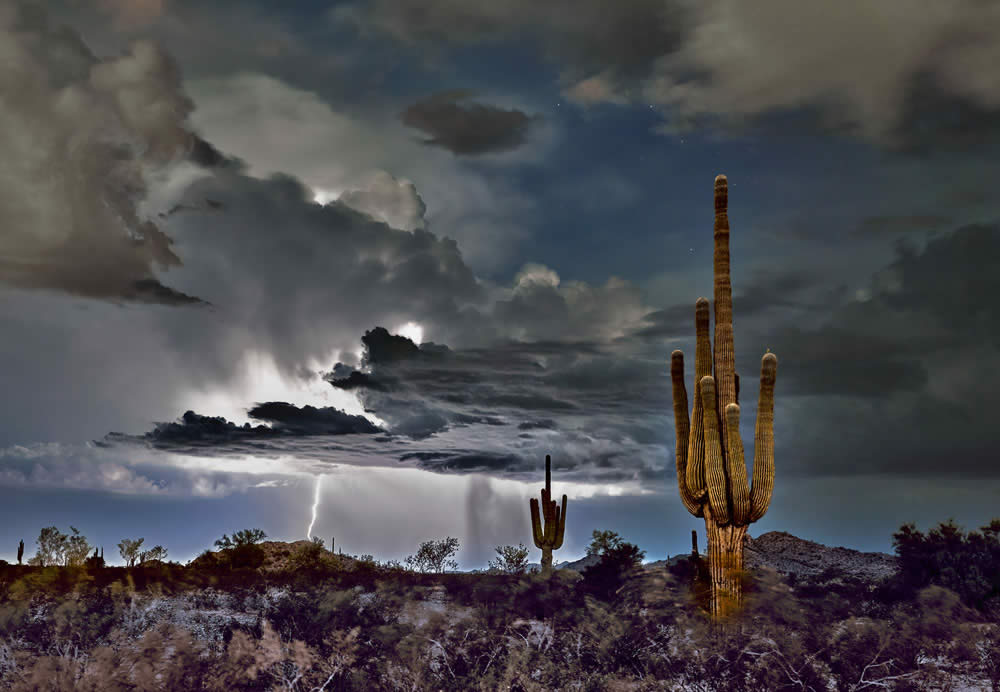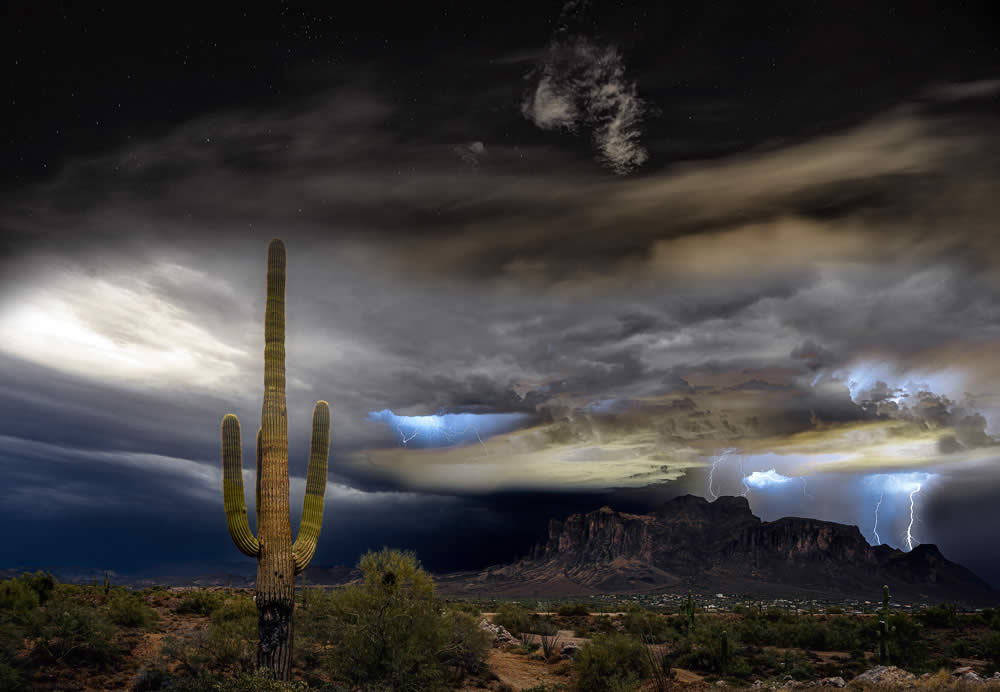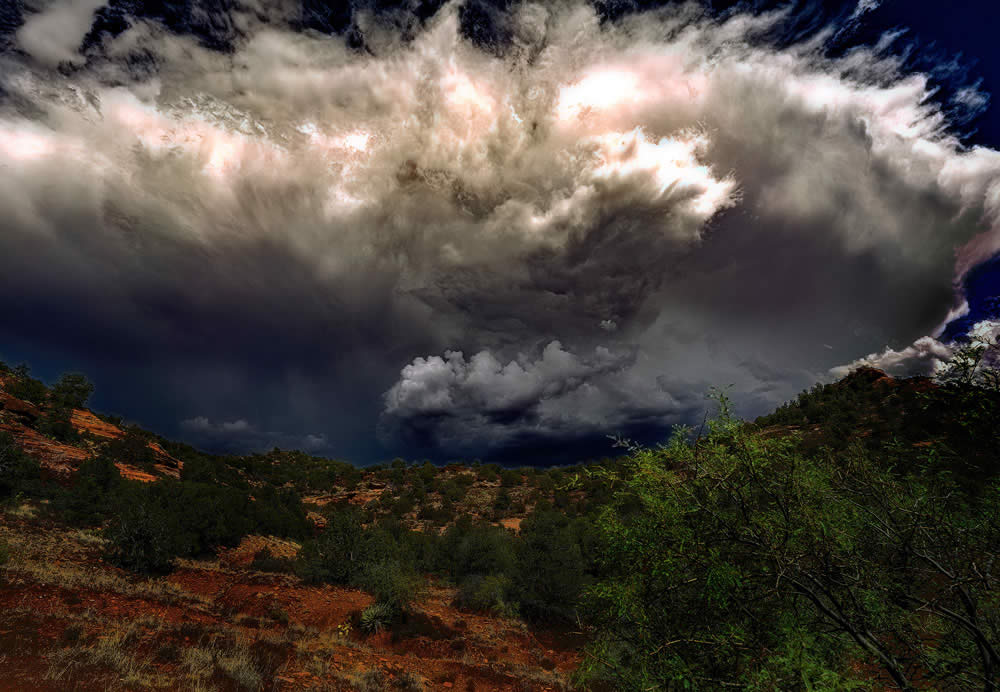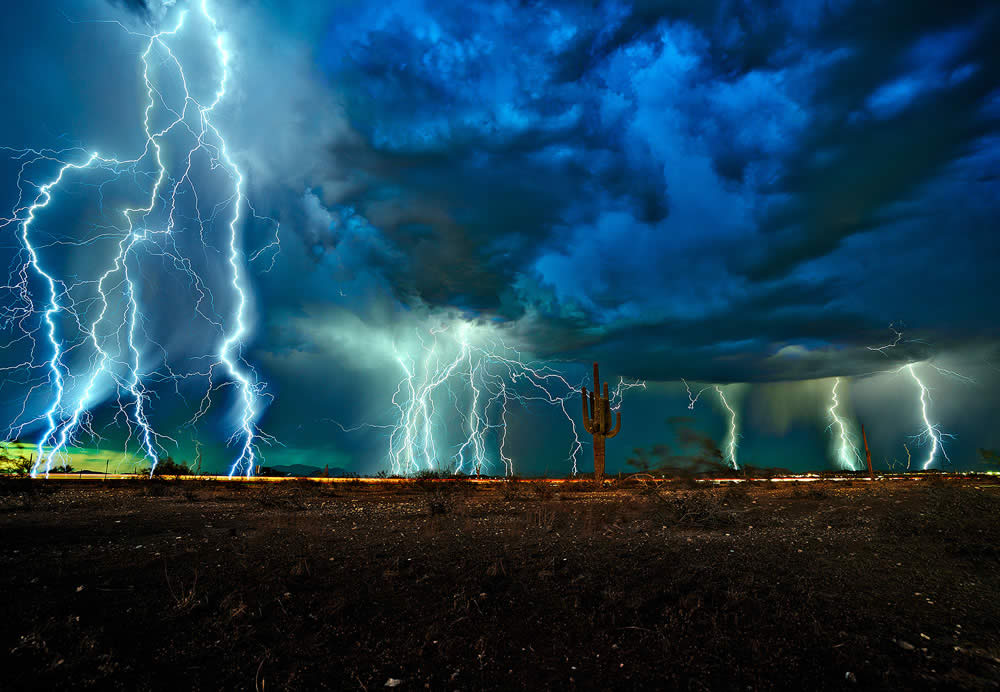The Arizona Monsoon: A Season of Powerful Storms
The Arizona Monsoon is a unique meteorological phenomenon that occurs during the summer months, bringing a dramatic shift in weather patterns to the Southwest region of the United States. Known for its powerful thunderstorms and dust storms, the Arizona Monsoon season is eagerly anticipated by locals and visitors alike. In this article, we will explore the characteristics and impact of the Arizona Monsoon, as well as essential experiences and safety tips for navigating this season of intense weather.
Understanding the Arizona Monsoon
The term "monsoon" originates from the Arabic word "mausim," which means "season" or "wind-shift." In Arizona, the monsoon season spans from June to September. During this time, there is a significant increase in moisture and a change in wind direction, creating the perfect conditions for thunderstorm development. While other regions may experience monsoon seasons, the Arizona Monsoon is unique to the Southwest and is characterized by its intense and often unpredictable storms.
The Shift in Weather Patterns
In the months leading up to the monsoon season, the prevailing winds in Arizona come from the west or northwest, bringing dry air from California and Nevada. However, as summer approaches, the wind direction shifts to southerly or southeasterly, drawing moisture from the Pacific Ocean and the Gulf of Mexico. This change in wind patterns, coupled with daytime heating, triggers a radical transformation in weather conditions statewide.
Thunderstorms and Dust Storms
The hallmark of the Arizona Monsoon is its powerful thunderstorms. These storms are convective in nature, fueled by intense surface heating and a strong influx of moisture. Monsoon thunderstorms can produce heavy rain, lightning, hail, and strong winds. They are responsible for a substantial portion of the annual precipitation in central and northern Arizona, and even more in southern Arizona.
Alongside thunderstorms, dust storms, also known as "haboobs," are a common occurrence during the Arizona Monsoon. These massive dust clouds are generated by strong outflow winds from thunderstorms. Haboobs can reduce visibility to near-zero and pose a significant hazard, especially for drivers on the road. It is crucial to take proper precautions and stay informed about weather conditions during the monsoon season.
 Photo by Edward Mitchell
Photo by Edward Mitchell
Essential Monsoon Experiences
Despite the inherent dangers of monsoon storms, there are aspects of this season that locals and visitors find captivating. Let's explore some of the essential experiences associated with the Arizona Monsoon.
The Sights of Monsoon
One of the most striking aspects of the Arizona Monsoon is the visual spectacle it creates. The normally clear blue skies of Phoenix give way to towering, gray clouds that loom over the Sonoran Desert. The contrast between the dark storm clouds and the arid landscape adds a unique beauty to the scenery. Witnessing a bright lightning strike against the backdrop of these dramatic clouds is a sight that locals cherish.
Another awe-inspiring phenomenon during the monsoon season is the formation of haboobs. These massive dust storms can be seen approaching from a distance, with a wall of dust blanketing the horizon. While it's essential to keep a safe distance from haboobs due to their hazardous conditions, witnessing their formation and movement can be a truly remarkable experience.
The Smell of Rain in the Desert
Rainfall is relatively scarce in Arizona, making the smell of rain during the monsoon season all the more special. The distinct aroma that permeates the air after a rain shower is attributed to the creosote bush, a native plant with waxy leaves. When the rain interacts with the waxy coating on the leaves, it releases a sweet and pleasant scent. This unique fragrance has become so beloved that some shops even sell bundles of creosote to recreate the rain smell in homes and showers.
The Sounds of Monsoon
The sounds of a monsoon storm can be both soothing and exhilarating. The rhythmic patter of raindrops on rooftops or umbrellas creates a calming ambiance known as "pink noise." This gentle, repetitive sound can have a relaxing effect, lulling people to sleep or providing a peaceful atmosphere indoors. However, it's the accompanying thunder that often steals the show. The rumble of thunder can be heard long before the rain arrives, adding an element of anticipation and excitement to the storm experience.
The Brevity of Monsoon Storms
Unlike prolonged rain showers in other parts of the country, monsoon storms in Arizona are notorious for their brevity. While they can pack a punch in terms of intensity, they typically pass through relatively quickly. The short-lived nature of these storms adds an element of surprise and excitement to the monsoon season. It's not uncommon for locals to treat a sudden downpour as a delightful surprise, knowing that it won't disrupt their plans for too long.
Safety Tips for Monsoon Season
While monsoon storms can be a captivating experience, it's crucial to prioritize safety during this season of intense weather. Here are some essential tips to keep in mind:
- Stay Informed: Stay updated on the latest weather forecasts and warnings from trusted sources such as the National Weather Service. Pay attention to any advisories or alerts regarding thunderstorms, flash floods, or dust storms.
- Seek Shelter Indoors: When thunderstorms approach, seek shelter indoors to protect yourself from lightning strikes and potential hazards. Stay away from windows and avoid using electrical devices until the storm has passed.
- Be Cautious on the Road: If you must drive during a monsoon storm, exercise extreme caution. Reduce your speed, increase your following distance, and be prepared for reduced visibility and sudden gusty winds. If a dust storm approaches, pull off the road, turn off your lights, and wait for the storm to pass.
- Avoid Flooded Areas: Never attempt to drive or walk through flooded areas. Even shallow water can sweep vehicles away or pose a drowning risk. Turn around and find an alternate route.
- Secure Outdoor Items: Strong winds during monsoon storms can cause damage by blowing away outdoor furniture, decorations, or other loose items. Secure or bring these items indoors to prevent them from becoming hazards.
- Stay Hydrated: Monsoon season coincides with the summer months, which means high temperatures. Stay hydrated by drinking plenty of water, especially if you spend time outdoors.
- Prepare an Emergency Kit: Have an emergency kit ready with essential supplies, including flashlights, batteries, a first aid kit, non-perishable food, water, and a battery-powered weather radio. Be prepared for power outages and other potential disruptions.
By following these safety tips, you can enjoy the spectacle of the Arizona Monsoon season while keeping yourself and your loved ones safe.
Conclusion
The Arizona Monsoon season brings a unique blend of beauty and intensity to the Southwest. With its powerful thunderstorms, dust storms, and distinct experiences, it captivates both locals and visitors alike. While it's essential to appreciate the natural wonders of the monsoon, safety should always be a top priority. By staying informed, seeking shelter during storms, and taking necessary precautions, you can enjoy the monsoon season while staying out of harm's way. Embrace the sights, sounds, and smells of the Arizona Monsoon, and make lasting memories during this season of powerful storms.
 Photo by Edward Mitchell
Photo by Edward Mitchell
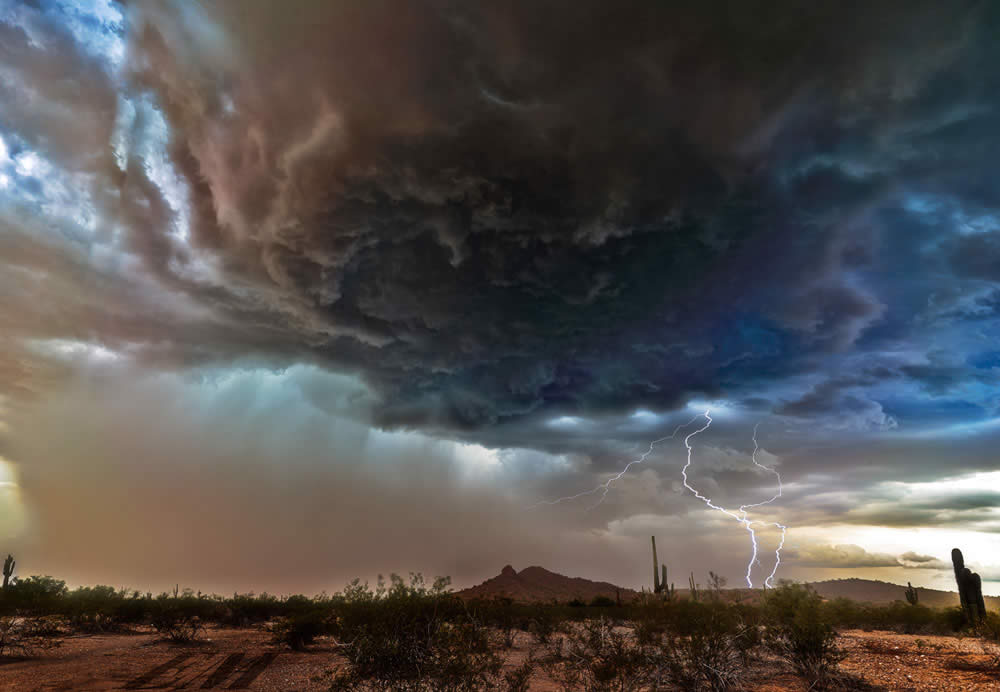 Photo by Edward Mitchell
Photo by Edward Mitchell
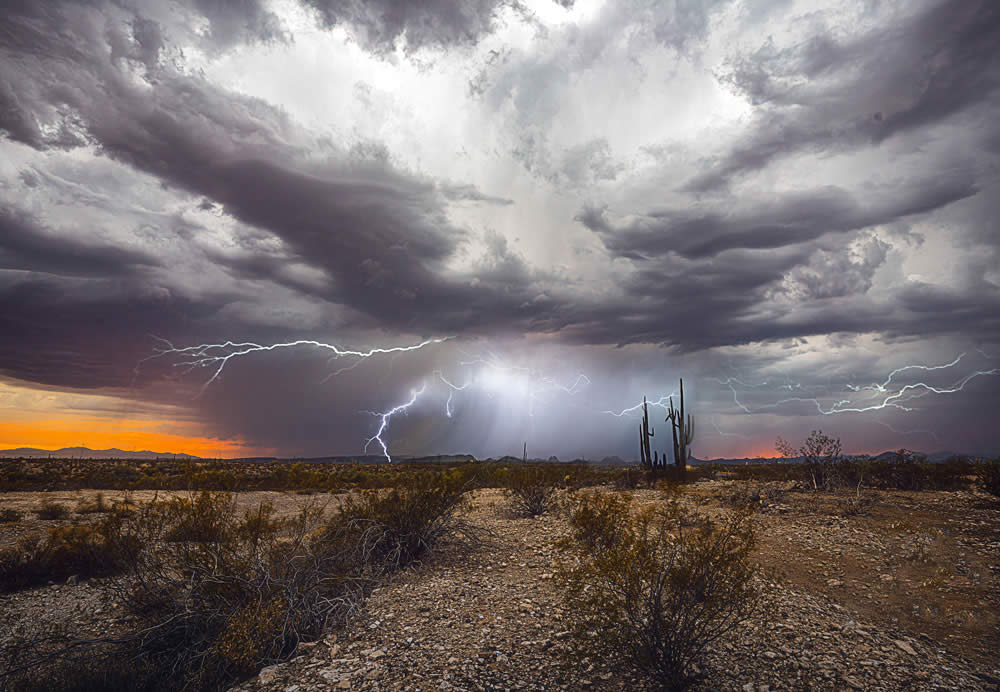 Photo by Edward Mitchell
Photo by Edward Mitchell
 Photo by Edward Mitchell
Photo by Edward Mitchell
 Photo by Edward Mitchell
Photo by Edward Mitchell
 Photo by Edward Mitchell
Photo by Edward Mitchell
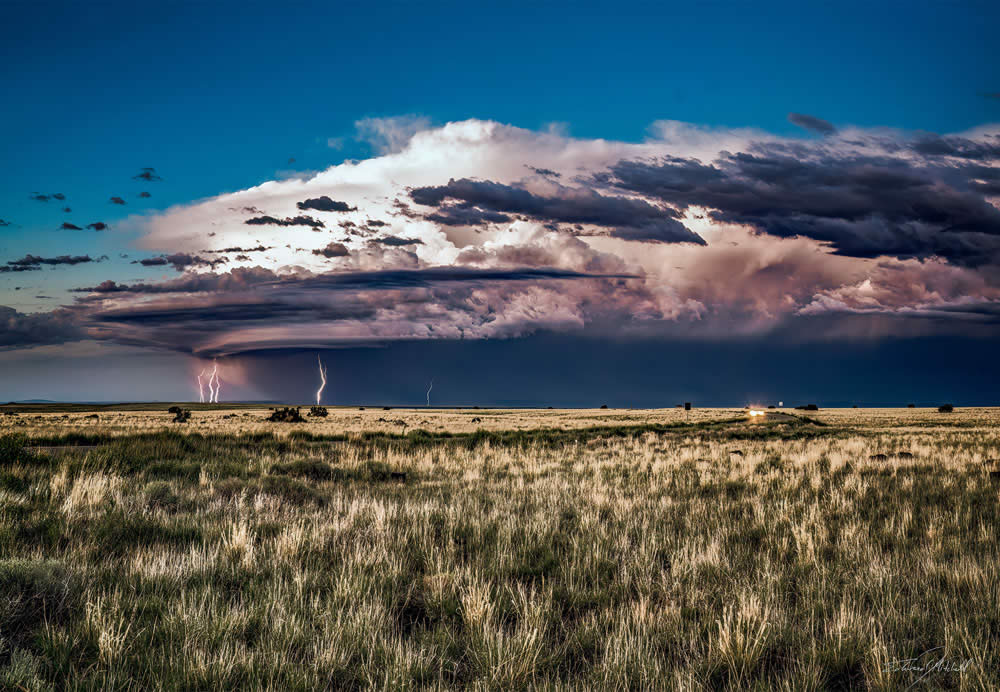 Photo by Edward Mitchell
Photo by Edward Mitchell
 Photo by Edward Mitchell
Photo by Edward Mitchell
Edward Mitchell
Edward Mitchell is an internationally published photographer who specializes in nightscape and monsoon photography. He has won several awards for his work, most notably for the 2023 World Meteorological Organization’s annual weather calendar (April spread). He is constantly pushing his boundaries, both artistically and physically, as shown in this photo from the 2nd highest vehicle pass in Colorado at just over 13,000 feet.
He strives to bring the scene to the viewer in his photos and give one the impression they are standing with the photographer on site.
Ed currently lives in Camp Verde, Arizona. He has one daughter and one son, both actively serving in the US Military.
Copies of his work can be ordered online at edmitchellphoto.com.
Back




